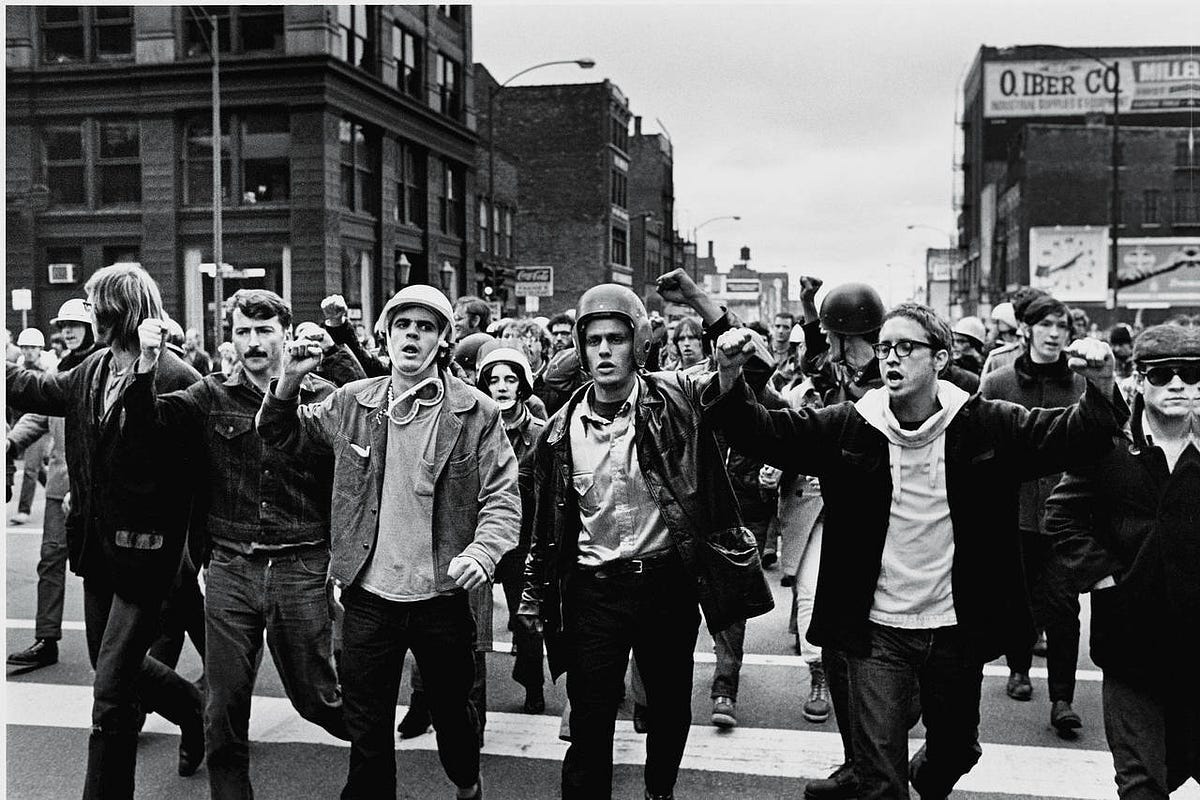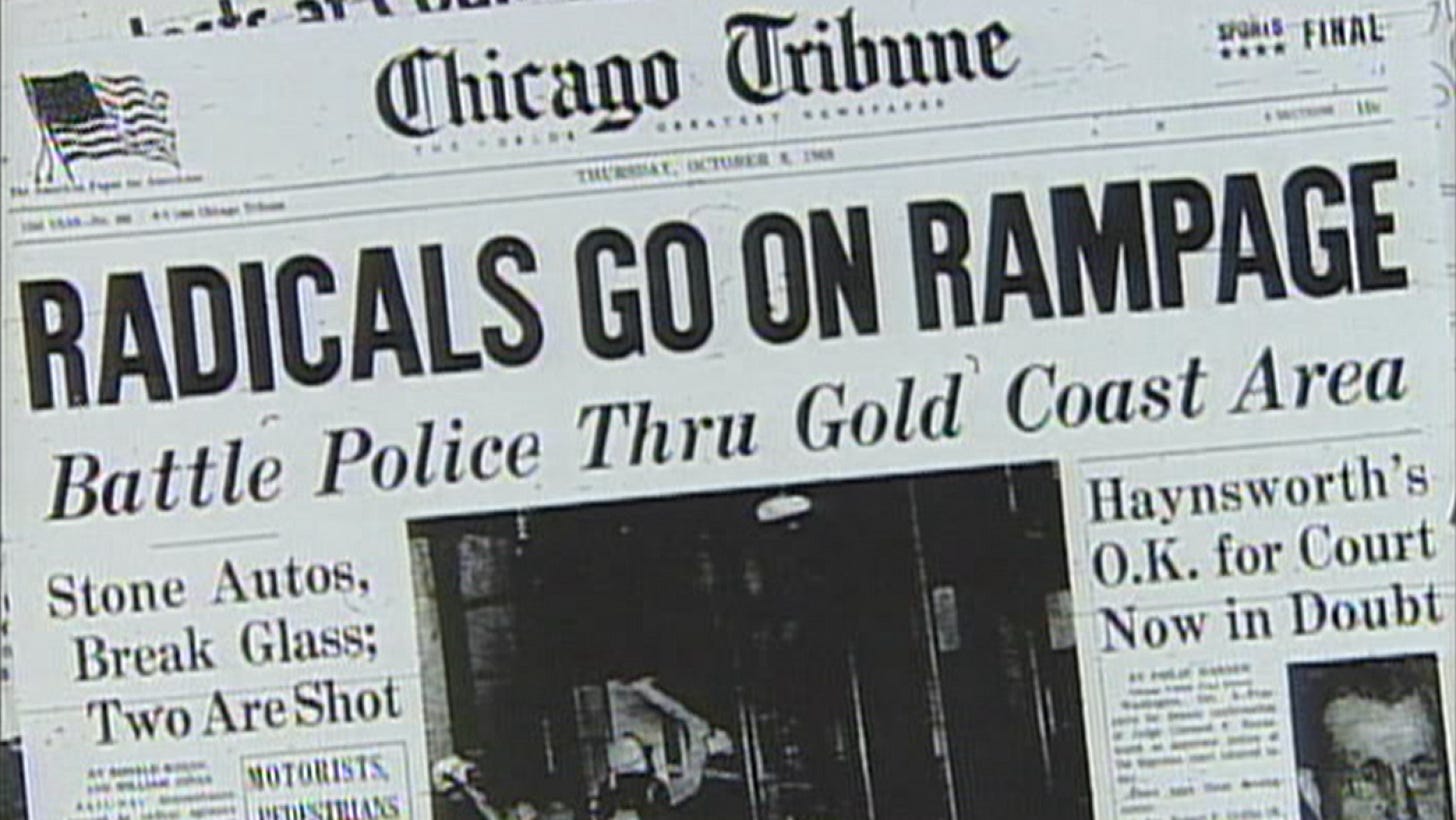On This Day: Chicago’s Days of Rage in 1969 Exposed the Fantasy of Violent Revolution
Fifty-six years ago, a radical protest collapsed into chaos, revealing the delusions of self-proclaimed revolutionaries
A Revolution That Never Was
On 8 October 1969, a group of radical activists calling themselves the Weathermen took to the streets of Chicago. They marched not for peace, but for conflict. They wanted to bring the violence of the Vietnam War home to American soil and believed that revolution could be sparked by sheer force. They called it the Days of Rage, a four-day attempt to ignite a national uprising through destruction and confrontation.
What happened instead was something very different. What was meant to be the birth of a new political era quickly revealed itself as a confused, theatrical failure. The streets were littered with broken glass and blood, but no movement was born. No revolution came.
Rage in a Vacuum
The Weathermen were not the first to believe in the myth of the noble insurgent. Inspired by Che Guevara, the Black Panthers, and the Vietnamese resistance, they were convinced that violence was not just necessary but morally righteous. They had broken away from the broader anti-war movement, claiming that peaceful protest was a waste of time.
Their takeover of the Students for a Democratic Society earlier that year was not a political victory, but a hostile eviction of dissent. Anyone who disagreed with their violent agenda was thrown out. The Weathermen were not building consensus, they were building a cult of anger.
In the months leading up to October, their members travelled across college campuses promising something bold and historic. They claimed thousands would join them in Chicago, where the streets would burn and power would finally shift. They called it the revolution, as if saying it out loud would make it real.
The March to Nowhere
When the moment finally came, it was pitiful. Barely 300 people turned up on the first night. By the second, there were fewer than half that number. Some wandered Lincoln Park in the cold, waiting for others who never arrived. Others built bonfires out of park benches and muttered slogans to nobody in particular.
Still, they marched. Into Chicago’s affluent Gold Coast they went, swinging crowbars into shop windows and smashing car windscreens. They vandalised mailboxes, looted stores, and chanted for change that had no defined shape. It was protest without purpose, a tantrum dressed in revolutionary garb.
But the police were waiting. Outnumbered five to one, the Weathermen surged forward anyway. Bricks flew through the air, then bottles. The line of officers held until it broke, and then the street erupted. Glass shattered, sirens screamed, and gunfire cracked through the chaos.
By the end of that first night, 28 police officers had been injured. Dozens of rioters were hospitalised or arrested. The city was wounded, not transformed.
When the Left Turned Its Back
Perhaps the most telling detail of the Days of Rage was who stayed away. The Black Panthers, once potential allies, denounced the Weathermen’s actions. Anti-war organisers said the violence played directly into the hands of President Nixon and the conservative establishment. Even those who wanted real change saw the protest as reckless and self-defeating.
The Weathermen blamed everyone else. They claimed betrayal. They said the movement had been let down by cowards. What they could not admit was that their fantasy had collapsed under the weight of its own absurdity.
You cannot start a revolution by smashing a window. You cannot overthrow a government with graffiti. And you certainly cannot win public support when you are beating strangers’ cars with metal pipes in the middle of the night.
Legacy of a Failed Uprising
In the aftermath, the group rebranded as the Weather Underground. The new name marked a deeper descent into extremism. No longer trying to win crowds, they turned to bombs. Arson attacks followed. Explosions rocked government buildings including the US Senate and the Pentagon. By the mid-1970s, their leaders were on the FBI’s most wanted list.
Many went into hiding. Others were eventually captured but escaped prosecution due to illegal surveillance carried out by federal agencies. In the end, no one faced charges for what happened in Chicago. The revolution they promised never came. The damage they caused faded into the background of a country that had other things to deal with.
Fifty-six years later, the Days of Rage are a footnote. A failed uprising. A photograph of broken glass. They serve as a warning, not an inspiration.
History is full of miscalculations, but few are as loud and misguided as the Days of Rage. They were supposed to change America. Instead, they exposed how easily passion turns into delusion when it loses touch with reality.
Radicalism divorced from public support becomes noise. Violence sold as virtue becomes self-parody. And those who cry revolution without offering vision or compassion are left shouting into the wind.
The lesson of 8 October 1969 is not about left or right. It is about scale, purpose, and responsibility. Rage without direction builds nothing. It only burns.



